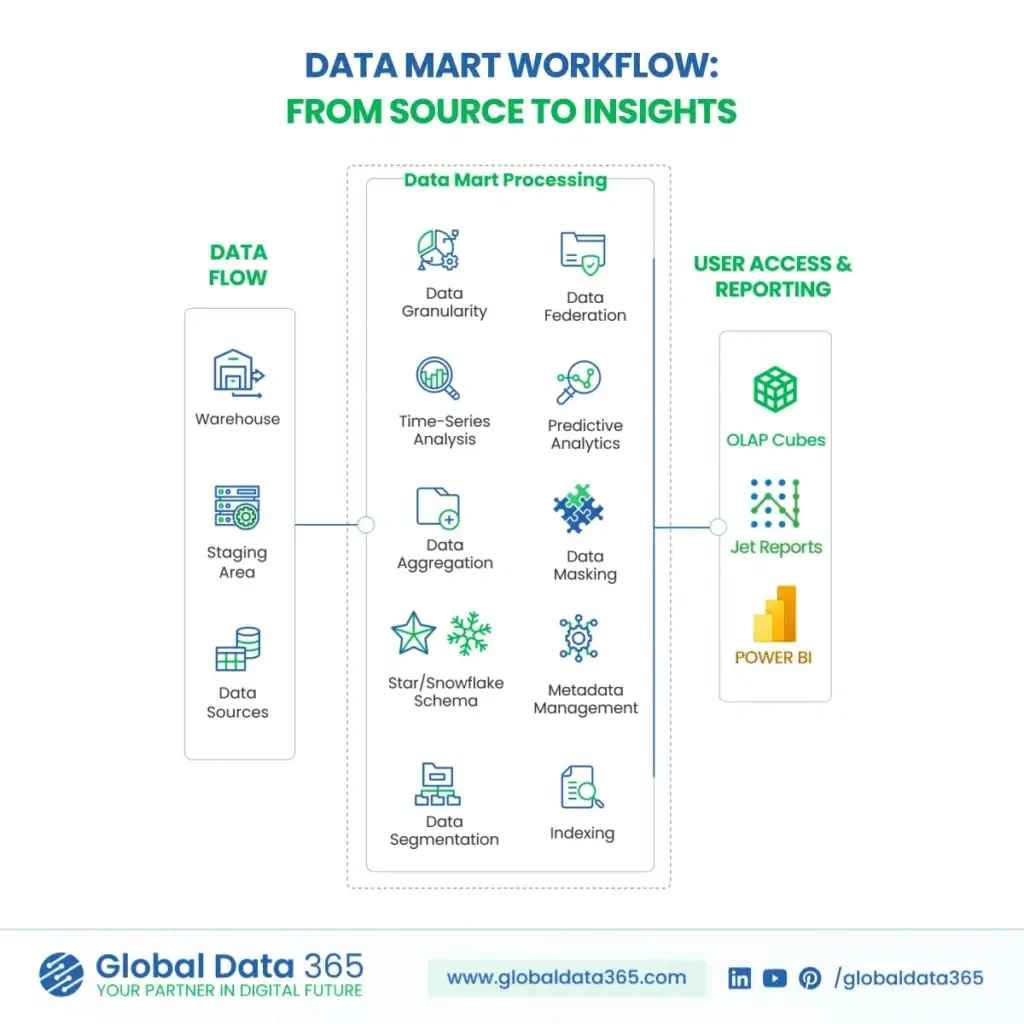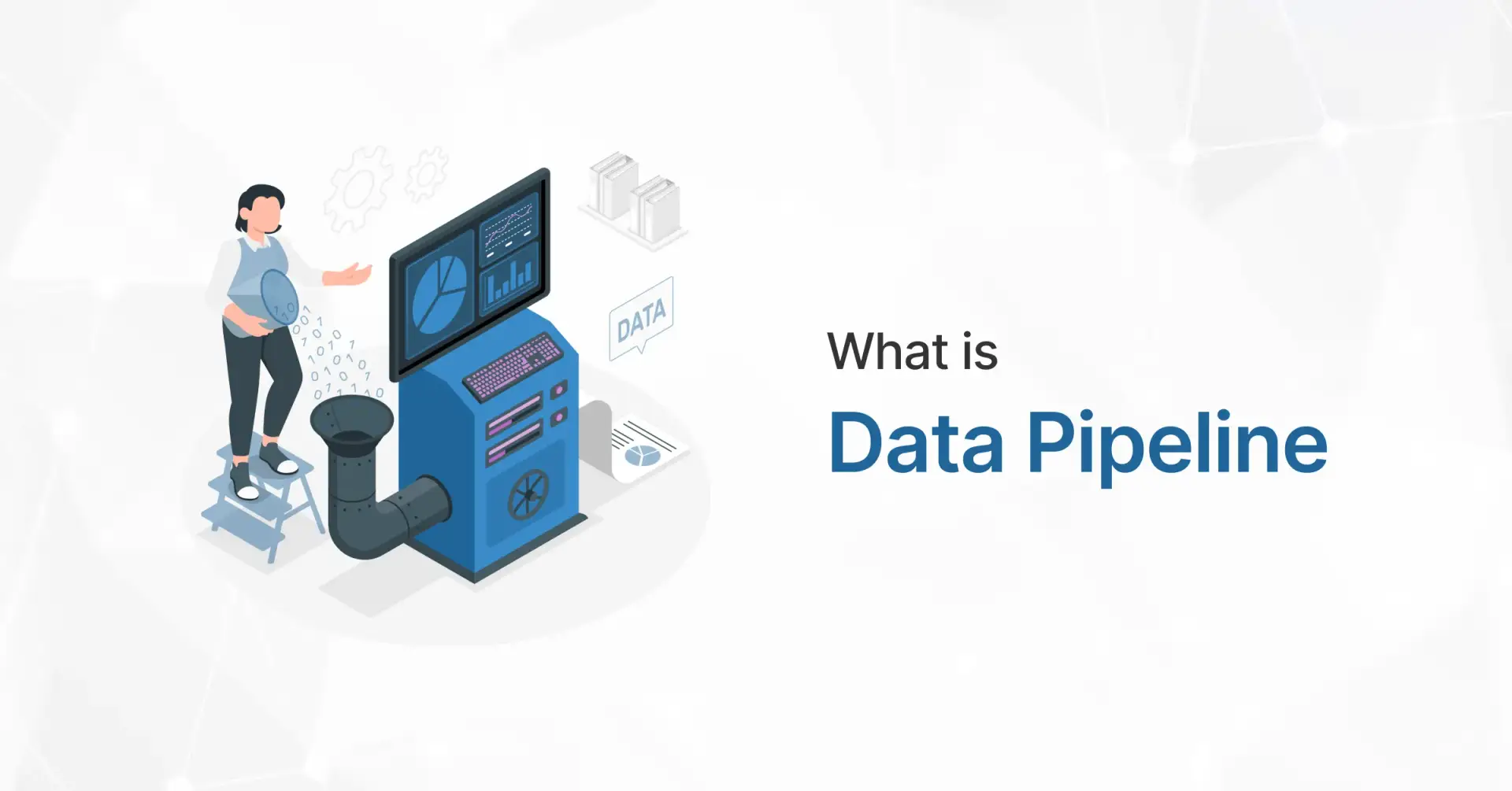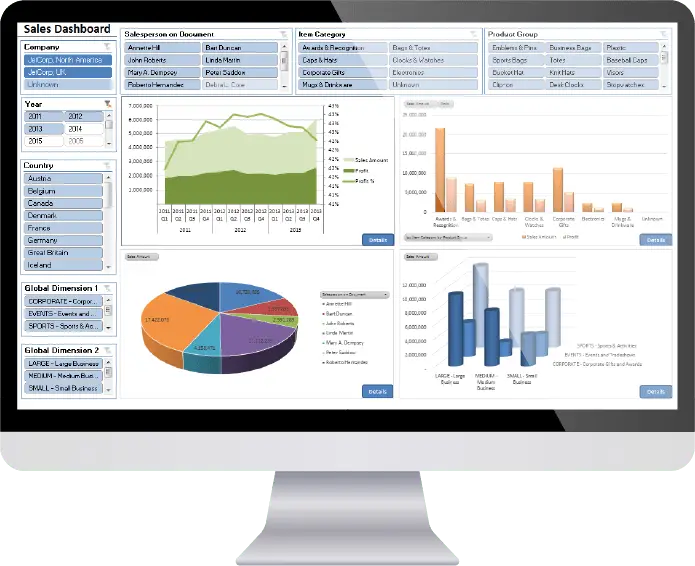What is Data Mart?
What is a Data Mart? A Beginner’s Guide

- Global Data 365
We use many data storage and repository solutions, but do you know what a data mart is? Data marts are a subset of a data warehouse, specifically designed to serve the needs of a particular department, business unit, or team. While a data warehouse contains enterprise-wide data and serves as a central repository, but they focus on specific area of the business, providing relevant data for faster, more efficient analysis.
For example, a marketing team may use a marketing data mart to track campaign performance, while the sales department uses a sales data mart to analyze customer interactions. By narrowing down the data scope, you can enable quicker insights and more efficient decision-making.
What is Data Mart?
A precise definition of data mart is a specialized subset of a data warehouse, designed to meet the specific data analysis needs of a particular department, business unit, or team within an organization. Unlike a data warehouse, which stores enterprise-wide data as a central repository, they focus on a narrower scope, providing only relevant data for faster and more targeted analysis. By offering a streamlined view of data, it enables users to extract actionable insights quickly without navigating through extensive datasets. This tailored approach makes them a valuable tool for optimizing decision-making and improving operational efficiency. Data Warehouses are composed entirely of proprietary corporate data, while data marts take advantage of data purchased from third-party firms.
Why Are Data Marts Important for Businesses?
There is a critical role of data mart in business intelligence and data accessibility. Their department-specific focus allows teams to quickly analyze relevant data without sifting through large, complex datasets found in a full-scale data warehouse. With quicker access to accurate data, organizations can make informed decisions and respond to market changes faster, leading to a competitive edge.
Types of Data Marts
There are three main types, each serving different organizational needs:
- Dependent Data Mart:
A dependent mart is built from a centralized data warehouse. Data is first stored in the warehouse and then extracted and loaded into the mart. This ensures consistency and data integrity across the organization. - Independent Data Mart:
An independent mart is a standalone system that does not rely on a data warehouse. It pulls data directly from source systems. While quick to implement, it can result in data silos and inconsistencies if not properly managed. - Hybrid Data Mart:
A hybrid mart combines elements of both dependent and independent data marts. It leverages centralized data from the warehouse while allowing departments to store and manage their own data as needed.
How to Build a Data Mart?
Building a mart involves several key steps to ensure it aligns with business needs and supports efficient data analysis:

- Define Business Requirement:
The first step in building is understanding the business requirements of the department or team it will serve. This involves identifying the specific data they need, how they will use it, and what type of analysis they’ll conduct.
- Design Architecture:
When designing the architecture, businesses need to choose between a star schema and a snowflake schema:
–Star Schema: Data is organized around a central fact table with related dimension tables. It’s simple and efficient for querying.
-Snowflake Schema: A more normalized version of the star schema, where dimension tables are further broken down into additional tables. It can improve storage efficiency but may be more complex to query.
- Extract, Transform, and Load (ETL) Process:
The ETL process is critical to build:
-Extract: Data is pulled from source systems or the data warehouse.
-Transform: Data is cleaned, normalized, and transformed to fit the data mart’s schema.
-Load: The transformed data is loaded into the data mart for querying and analysis.
- Testing and Validation:
Testing ensures the data mart is working correctly and the data is accurate. Validation includes checking data consistency, performance, and ensuring that queries return correct results.
- Maintenance and Scaling:
They require ongoing maintenance, such as updating data, optimizing queries, and scaling the infrastructure to meet future growth and usage needs.
Benefits of Data Mart for Business Intelligence
- Improved Performance:
With smaller, focused datasets, they provide faster query performance, allowing users to retrieve the data they need quickly without waiting for large-scale processing.
- Enhanced Decision-Making:
By offering department-specific data, they empower teams to make informed, data-driven decisions. This business intelligence leads to improved strategic planning and execution.
- Cost Efficiency:
They are more cost-effective compared to a full data warehouse implementation. For small or mid-sized teams, the reduced scope means lower infrastructure and maintenance costs.
- Focused Analysis:
They allow departments to concentrate on the data that matters most to them, leading to more precise analysis and actionable insights.
- Easier to Manage:
It is simpler to design, build, and maintain than a large data warehouse. This simplicity translates to lower maintenance costs, less complexity in data integration, and fewer challenges in ensuring data quality and consistency.
- Enhanced Security and Control:
They can be designed to limit access to specific data, giving organizations more control over who can view or modify sensitive information. This targeted control is crucial for departments dealing with confidential or proprietary data.
When Should You Use a Data Mart?
The Data Marts are designed for the end-user needs in a strategic business unit or department.
- Department-Specific Analysis: If a department needs tailored insights from data, a data mart is the ideal solution.
- Budget Constraints: They are a more affordable option than building a full-scale data warehouse.
- Quick Deployment Needs: If your organization needs a fast solution for data analysis, they are quicker to implement.
- Simpler Data Requirements: When only a small, focused data set is needed for analysis, it is more efficient.
Common Use Cases for Data Marts
- Sales and Marketing Teams:
Sales departments can use it to track performance metrics and customer trends. Marketing teams can monitor campaign effectiveness and return on investment.
- Finance Departments:
Finance teams can use them for financial reporting, budget analysis, and cost tracking, allowing them to make more informed financial decisions.
- Customer Service and Support:
Customer service teams can track performance metrics like response times, satisfaction rates, and case resolution data through a dedicated data mart.
- Healthcare:
In healthcare organizations, it can be used to analyze patient data, medical billing, and track performance metrics for different departments.
Challenges and Limitations of Data Marts
While it offer numerous benefits, they are not without their challenges, following are some disadvantages of data mart:
- Data Silos: Independent data marts can result in isolated systems that don’t communicate with other business units, leading to inconsistent data across departments.
- Maintenance: Overhead managing multiple marts can be time-consuming, especially if each department operates its own independent system. This can increase maintenance costs over time.
- Scalability: As businesses grow, integrating multiple marts or scaling them can become complex. Without careful planning, businesses may struggle to scale their data infrastructure.
- Data Redundancy and Maintenance: They can lead to data redundancy across the organization, especially when multiple departments create their own marts with overlapping data. This duplication not only increases storage costs but also complicates data maintenance and synchronization, potentially resulting in inconsistent data across departments.
Best Practices for Implementation
- Start Small, Scale Gradually: Begin with a single mart for one department and scale based on business needs. This minimizes complexity and ensures the system can evolve without becoming overwhelming.
- Ensure Data Quality: To avoid issues with incorrect or outdated information, focus on data quality and implement strong governance measures.
- Align with Business Goals: Ensure thar it aligns with the organization’s goals and serves a clear business purpose. Each should be designed to support decision-making within the relevant department.
- Regular Monitoring and Optimization: Continuously track the performance of the data mart and optimize it for better efficiency and faster query times. This helps ensure it remains an effective tool for data analysis.
Future Trends in Data Marts
- Cloud-Based Data Marts: With the rise of cloud computing, cloud-based data marts offer businesses the flexibility to scale their infrastructure without the need for costly on-premises hardware. It also improve accessibility and performance.
- Data Mart Automation: AI and machine learning are revolutionizing data marts by automating ETL processes, improving data quality, and optimizing query performance.
- Integration with Real-Time Analytics: As businesses demand faster insights, they are increasingly being integrated with real-time analytics platforms. This trend enables to provide near-instantaneous insights by processing and delivering data as it’s generated, allowing for more agile decision-making and up-to-the-minute reporting across departments.
- Data Mart Virtualization: Data Virtualization is emerging as a way to create a unified view of data across multiple sources without physically consolidating the data. This approach allows organizations to access and analyze data from different systems in real time, improving flexibility, reducing data duplication, and lowering storage costs.
- Self-Service Data Marts: Self-service tools empower business users to create and manage their own data marts, reducing dependency on IT departments and fostering faster decision-making.
In Conclusion
In conclusion, they are an essential part of modern business intelligence, enabling organizations to access, analyze, and leverage data quickly and efficiently. Whether you’re looking to improve decision-making, reduce costs, or enhance performance, implementing a well-designed mart can help your business thrive in today’s competitive environment. By understanding their benefits, challenges, and best practices, you can ensure that your organization is making the most of its data-driven opportunities.
Are you ready to empower your teams with faster, more targeted insights? Consider implementing a data mart tailored to your department’s specific needs. If you’re unsure where to begin, our experts can help you assess your data strategy and build a solution that drives meaningful results. Contact us today to start your journey toward more efficient and effective data management!
Talk to our BI Experts!
Search Blog
Related Resources

Mastering Power BI Data Modeling: A Comprehensive Guide

What is Data Pipeline?

What is Data Mining?



